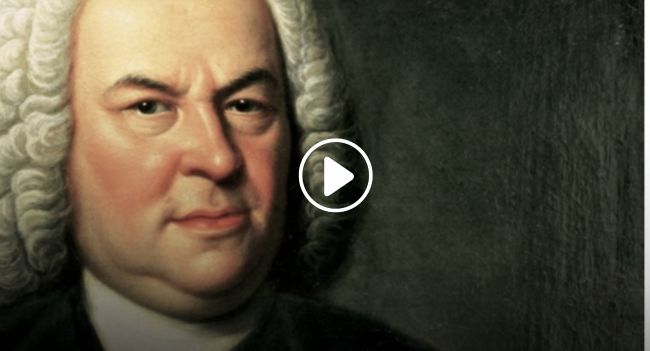Bach’s collection of 48 Preludes and Fugues in all the major and minor keys has long been a bible for keyboard players, and was the inspiration for similar sets by Busoni, Chopin, Rachmaninov and Shostakovich, among others. Bach’s decision to explore music in all the keys had, in turn, been motivated by his predecessors – notably JKF Fischer, from whose Ariadne musica Bach borrowed and developed several themes.
- Why did Bach go to prison?
Written ‘for the use and profit of musical youth’, the first of the two books of the ‘48’ appeared in 1722, the second following some 20 years later—a period when Bach played an active role in the development of various keyboard instruments. There is no easy answer to the question of which type of instrument is most suitable for these works. Bach, ever practical, would no doubt have played them on the range of keyboards available to him: clavichord, harpsichord or even organ.
The best recording of JS Bach’s The Well-Tempered Clavier
András Schiff (piano) (2012)
ECM New Series 476 4827
András Schiff’s two versions of the ‘48’ remain timeless classics. The first, a Decca recording from the 1980s, is poised and lyrical, if occasionally verging on the self-indulgent; the later, 2012 version on ECM would be my desert island choice. Schiff’s mature vision is more abstract, less sentimental: as such, we hear Bach’s music distilled to its essence, rather than the pianist’s personality.
Informed by the spikier sound of the harpsichord, Schiff avoids the temptation to smudge Bach’s textures with the piano’s sustaining pedal. Instead, thanks to his impeccable technique and instinctive grasp of the music’s architecture, he floats the sound, spinning cantabile melodies with the fingers alone (and with a little help from ECM’s glossy recording). Contrapuntal lines are sharply etched, so that even the most highly wrought fugues sound transparent as cut glass.
Schiff is unrivalled in his ability to delineate voice parts with subtle weighting and a conversational interplay that ranges from spirited repartee to reflective discourse. Discernible, too, is his synaesthetic perception of keys: A minor he sees ‘as red as blood’; D major as brassy gold; C major is the white of innocence; B minor is black, the colour of death. These readings span the gamut of human experience, from the exuberance of youth to the introspection of old age.
More great recordings of JS Bach’s The Well-Tempered Clavier
Edwin Fischer (piano) (1933-36)
Documents 231784
Among the most charismatic classic accounts from yesteryear are Glenn Gould’s (brilliant, if manic) and Richter’s (expansive and lyrical), but my definitive choice would be Swiss pianist Edwin Fischer, who made the first complete recording in the mid-1930s. It remains a landmark.
Poetic and thoughtful, Fischer is one of the most intuitive of Bach interpreters: tempos are beautifully judged – never too lugubrious nor too frenzied – and he eschews the anachronistic tendency for those grandiose, Romantic gestures that mar many early performances.
The recorded sound may not compare with recent versions, but this remastering reveals a luminous tone and transparent, cleanly articulated counterpoint. If you’re after a note-perfect reading, this may not suit; but for the humility and humanity of his musicianship, Fischer is unimpeachable.
Angela Hewitt (piano) (2008)
Hyperion CDA67741/4
Of the more recent piano versions, I’d be loath to lose Peter Hill’s honest, warmly coloured performances, but Angela Hewitt wins the day with her second recording from 2008. In contrast to her straight-laced earlier accounts, these mature readings are pliant and free, their liberal use of rhetorical gestures and rubato informed by Baroque harpsichord technique.
Her Fazioli piano is lighter and leaner than the Steinway of the previous version, its specially adapted action lending clarity. Hewitt is at her best in the dance-inspired pieces, which she plays with balletic grace; there’s never any hint of heaviness or pummelling here. My one caveat is that her microscopic attention to detail is sometimes just too finicky.
Gustav Leonhardt (harpsichord) (1989)
Deutsche Harmonia Mundi 886 919 53072
For period-instrument performances, leave shelf space in the library for Robert Levin’s intelligent readings on the type of keyboard instruments Bach himself would have known: the delicate clavichord, one- and two-manual harpsichords, organ and fortepiano – all of which reveal the glorious palette of colours, timbres and temperaments available to the composer.
For a budget option, harpsichordist Luc Beauséjour’s accounts on Naxos are vital and historically informed. Ultimately, though, I’d opt for Gustav Leonhardt, whose noble playing on an equally noble Rückers harpsichord stands as a classic. Leonhardt plumbs the depths of these works, both as a musician and as a scholar, and by the time he made this 1989 recording, they flowed from him as naturally as blood through his veins. Blissfully free of mannerisms or intrusive eccentricities, his readings are seigneurial.
And one to avoid…
Though a masterful pianist, Daniel Barenboim disappoints with this 2006 Warner Classics recording of the ‘48’. With their excessive use of the sustaining pedal, wide dynamic range, rubato and other obtrusive mannerisms, Barenboim’s readings sound more like Mendelssohn or Schumann than Bach. They will only appeal if you don’t mind Baroque music blurred through a soft-focus and rather sentimental lens.
